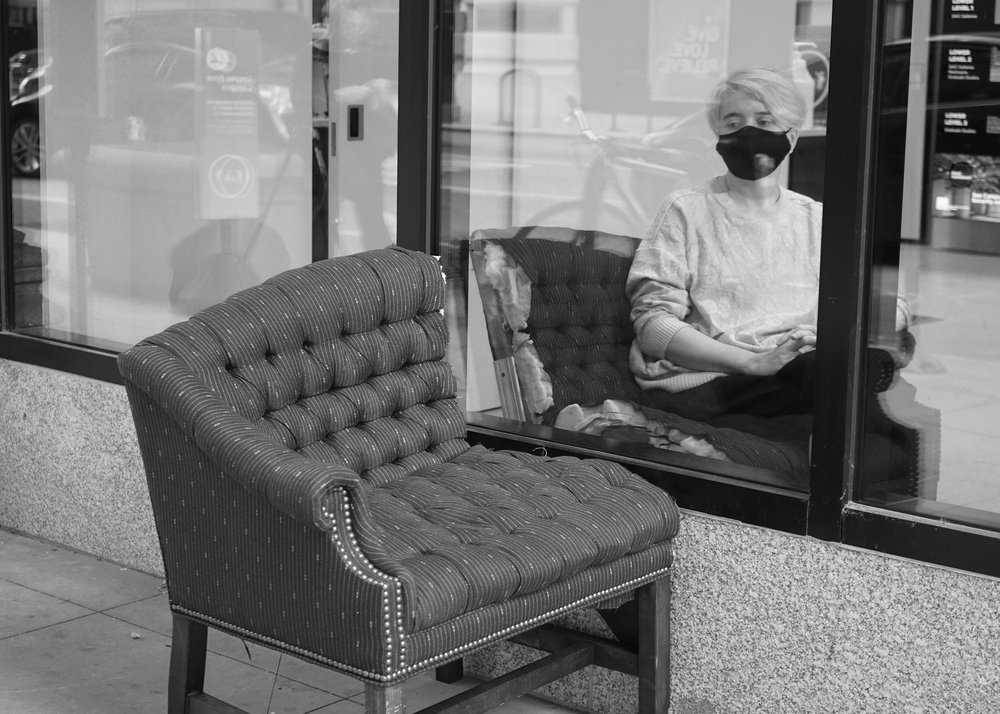
THE DISCIPLINE OF BEING A WEAPON
first performed on November 09, 2020
SAIC Galleries, 33 E Washington
performed once in 2020
MARIA PLOTNIKOVA
Yuliia Kolesnyk
Chicago, IL & Kyiv, Ukraine
212798071m212798071a212798071r212798071i212798071a212798071.212798071s212798071.212798071p212798071l212798071o212798071t212798071n212798071i212798071k212798071o212798071v212798071a212798071@212798071g212798071m212798071a212798071i212798071l212798071.212798071c212798071o212798071m
mashter.space
THE DISCIPLINE OF BEING A WEAPON
MARIA PLOTNIKOVA
The work consists of three independent performances which, however, build the more complex narrative if being performed in a sequence. Each of them explores a particular question that arose in the process of learning one’s own body’s dangerous nature.
1st part “When a body attempts to think of itself as of a body” (180 min)
There is a sofa split into two equal parts. Each part stands from both sides of the glass, creating the illusion of a whole sofa. I sit on the part which stands inside, leaving the second part, which stands on the street, to any other person. We sit there, like in a living room, close to each other but disconnected by the glass.
2nd part “When a body fights for being a body” (120 min)
There is a door fixed in a frame. I open it and try to walk further to the street, but bump into the window glass. After each failed attempt, I patiently try to go outside again.
3rd part “When a body recognises itself as a weapon” (60 min)
I sit in a chair. There is a pile of condoms next to me. My facial mask is fixed on the wire stand in the way I can put my face into it and breathe through it. The rule of the performance is to breathe in the air through the mask and breathe it out into a condom. After one condom is inflated, I tie it up and place it in front of me. Space gradually fills with condoms-balloons.
The work has multiple layers and contributes to the various pandemic narratives and discourses. What is the human body in the virus-deformed social context? How did the trust in our own bodies change due to the possible asymptomatic contagiousness? How do we deal with the unyielding need to be close to other people during the forced separation?
The proposed work deals with the topic of proximity, contact’s dichotomic nature, the fragile illusion of safety and its tremendous collapse due to the pandemic. I have reflected on human contact for years in various contexts: post-revolutionary Ukraine, the experience of living abroad in the UK, bonding to the people of different mindsets here in the US, etc. Now, I explore how we feel about it living in the social ‘radioactive winter’ of forced isolation.